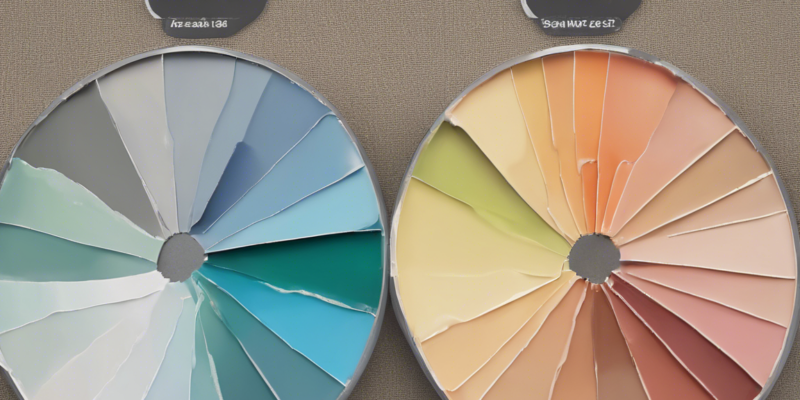What’s in a name? When it comes to colours, the answer may surprise you. The world of colour names is a vibrant, diverse, and endlessly fascinating one, filled with history, culture, and even a touch of psychology. From classic hues like navy and crimson to trendy shades like millennial pink and gen-z yellow, the names we give to colours can tell us a lot about how we perceive the world around us.
The Psychology of Colour Names
Colour psychology is a well-documented field that explores how different hues can affect our emotions, behaviours, and perceptions. The names we give to colours can play a significant role in this process. For example, warm colours like red and orange are often associated with passion, energy, and excitement, while cool colours like blue and green are linked to calmness, tranquillity, and relaxation.
The Cultural Significance of Colour Names
In many cultures around the world, colours hold deep symbolic meanings. For instance, white is often associated with purity and innocence in Western societies, while it symbolizes mourning and death in many Eastern cultures. Black can represent power and elegance in some contexts, but it can also signify evil or negativity in others. Understanding the cultural significance of colour names is essential for effective communication and cross-cultural understanding.
Common Colour Names and Their Origins
-
Indigo: This deep shade of blue gets its name from the indigo plant, which has been used for centuries to create blue dye.
-
Mauve: A pale purple hue, mauve was named after the French word for the mallow flower, which has similar pastel tones.
-
Chartreuse: This vibrant yellow-green colour is named after a type of French liqueur made by Carthusian monks.
-
Turquoise: A mix of blue and green, turquoise is named after the semi-precious stone of the same name, prized for its vibrant colour.
-
Magenta: This bold pinkish-purple shade was named after the town of Magenta in Italy, where a battle took place in 1859.
Unusual Colour Names and Their Stories
-
Baker-Miller Pink: This specific shade of pink was used in jail cells to reduce aggressive behaviour among inmates.
-
Sarcoline: A greyish-yellow colour that resembles the tone of human flesh, this name was chosen through a crowdsourcing project.
-
Glaucous: A pale grey-blue shade often seen in natural elements like plants and stones, this name comes from the Greek word for “silvery blue.”
-
Arsenic: A dark green shade reminiscent of the poison, this name adds a touch of danger to the colour palette.
-
Falu Red: A deep red colour commonly seen in Swedish wooden houses, this name refers to the copper pigment used in the paint.
How Colours are Named in the Fashion Industry
In the fashion world, colour naming is a carefully curated process that can make or break a collection. Designers often come up with evocative and memorable names for their custom shades, adding a touch of storytelling to their creations. From Christian Louboutin’s iconic “Ballerina Nude” to Tiffany & Co.’s signature “Tiffany Blue,” these colour names have become synonymous with the brands themselves.
Colour Naming Trends in the Digital Age
With the rise of social media and digital marketing, colour naming has taken on a new level of importance. Instagrammable shades like “Millennial Pink” and “Succulent Green” have become popular not just for their aesthetic appeal but also for their shareability online. Brands are increasingly using colour names to evoke specific emotions and create memorable brand associations in the minds of consumers.
The Evolution of Colour Names Over Time
Colour names, like language itself, evolve over time to reflect changes in society, technology, and culture. “Radiant Orchid” might be a trendy name for a shade of purple today, but in a few years, it could be replaced by a new, more avant-garde moniker. Keeping up with the ever-changing landscape of colour names can be a fun and engaging way to stay connected to the world around us.
Frequently Asked Questions (FAQs)
- Do colour names have a universal meaning?
-
While some colours do have consistent associations across cultures (e.g., red for passion, blue for calmness), the meaning of colour names can vary significantly depending on context and cultural norms.
-
How do designers come up with unique colour names?
-
Designers often draw inspiration from nature, art, literature, history, and pop culture to create evocative and distinctive colour names for their products.
-
Can colour names influence consumer behavior?
-
Studies have shown that colour names can have a subtle but measurable impact on consumer preferences and purchasing decisions, making them a powerful tool in marketing and branding.
-
Are there any rules for naming colours?
-
While there are no strict rules for naming colours, it’s essential to consider factors like cultural sensitivity, brand identity, and target audience when choosing colour names.
-
Why are some colours named after specific objects or places?
-
Colour names are often inspired by the natural world, historical events, cultural symbols, and everyday objects, adding layers of meaning and storytelling to the hues they represent.
-
Do colour trends affect colour naming conventions?
- Yes, colour trends in fashion, design, and pop culture can influence the naming conventions for new shades, as designers and brands strive to stay relevant and appeal to modern consumers.
In conclusion, the world of colour names is a rich tapestry of history, psychology, culture, and creativity. Whether you’re a designer, a marketer, or simply someone who appreciates the beauty of the world around you, taking a closer look at the names we give to colours can provide valuable insights into how we perceive and interact with the world. So, the next time you admire a stunning sunset or browse through a designer’s new collection, remember that there’s more to a colour name than meets the eye.

